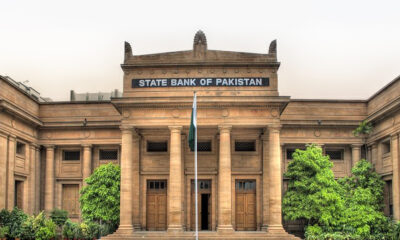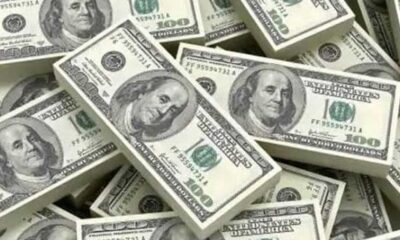- Revenue surplus generated by the provinces declines as well.
- Increasing markup payments a challenge for govt.
- SBP’s Monetary Policy Committee is scheduled to meet next week.
ISLAMABAD: Amid high policy rates, Pakistan’s debt servicing in the shape of mark-up on principal and outstanding loans increased by 74% in the first five months (July-November) of the ongoing fiscal year compared to the same period of last fiscal year, reported The News on Thursday.
Furthermore, another challenge that has emerged on the fiscal front is the decline in the revenue surplus generated by the provinces. The revenue stood at Rs107.9 billion in the first five months of the current fiscal year against Rs 202.5 billion generated in the same period of the last financial year.
The main challenge confronting the government is the increasing markup payments in response to high policy rates that have led to an increase in the current expenditures significantly. However, the government is putting all efforts into controlling the non-mark-up spending which is evidenced by the rise in primary surplus during Jul-Nov FY24.
The SBP’s Monetary Policy Committee is scheduled to meet next week and if it increases the interest rate then debt servicing will eat more revenues in the months ahead and create difficulties for the Ministry of Finance.
During Jul-Nov FY2024, total expenditures grew by 43% to Rs4,831.0bn against Rs3,367.4bn last year. The current spending grew by 46% mainly due to a significant rise in markup payments that increased by 74 % during the first five months of the current fiscal year, while non-markup spending witnessed just a growth of 20% on account of the government’s curtailed spending.
The overall fiscal deficit stood at 1.3% of the Gross Domestic Product (GDP) equivalent to Rs1,375.4 billion in the July-Nov period of CFY2024 against Rs1,168.6 billion (1.4% of GDP) for the same period of the last financial year. However, the overall primary balance remained surplus to the tune of Rs1,542.1 billion in the first five months of the current fiscal year against Rs511 billion in the same period of the last financial year.
The government had agreed with the IMF to restrict the primary surplus at Rs397.2 billion or 0.4% of the GDP for the current fiscal year.
The fiscal deficit was slashed to 1.3% of the GDP (Rs1,375.4bn) in Jul-Nov FY2024 from 1.4% of the GDP (Rs1,168.6bn) last year. The overall fiscal deficit for FY2024 is budgeted at 6.5% of the GDP. The primary surplus improved owing to contained growth in non-markup spending. It posted a surplus of Rs1,542.1bn (1.5 % of GDP) during Jul-Nov FY2024 against the surplus of Rs511.0 billion (0.6 % of GDP) last year. During Jul-Nov FY2024, net revenue receipts have improved by 68 % to reach Rs3,347.7bn against Rs1,996.5bn last year. This performance is largely attributed to a sharp rise in non-tax collection by 114% (Rs1,757.2bn against Rs822.4bn last year) and tax collection by 30% (Rs3,484.7bn against Rs2,688.4bn last year).
The FBR tax collection increased by 30.3% to Rs4,469bn during Jul-Dec FY2024 against Rs3,429bn last year. During the period, the FBR collected more than the assigned target of Rs4,425bn, thus exceeding Rs44bn. The revenue performance indicates that tax policy and administrative measures are paying off in terms of continuous improvement in revenue collection.

 Latest News1 day ago
Latest News1 day ago
 Latest News1 day ago
Latest News1 day ago
 Latest News1 day ago
Latest News1 day ago
 Latest News1 day ago
Latest News1 day ago
 Latest News1 day ago
Latest News1 day ago
 Latest News1 day ago
Latest News1 day ago
 Latest News1 day ago
Latest News1 day ago
 Latest News1 day ago
Latest News1 day ago























